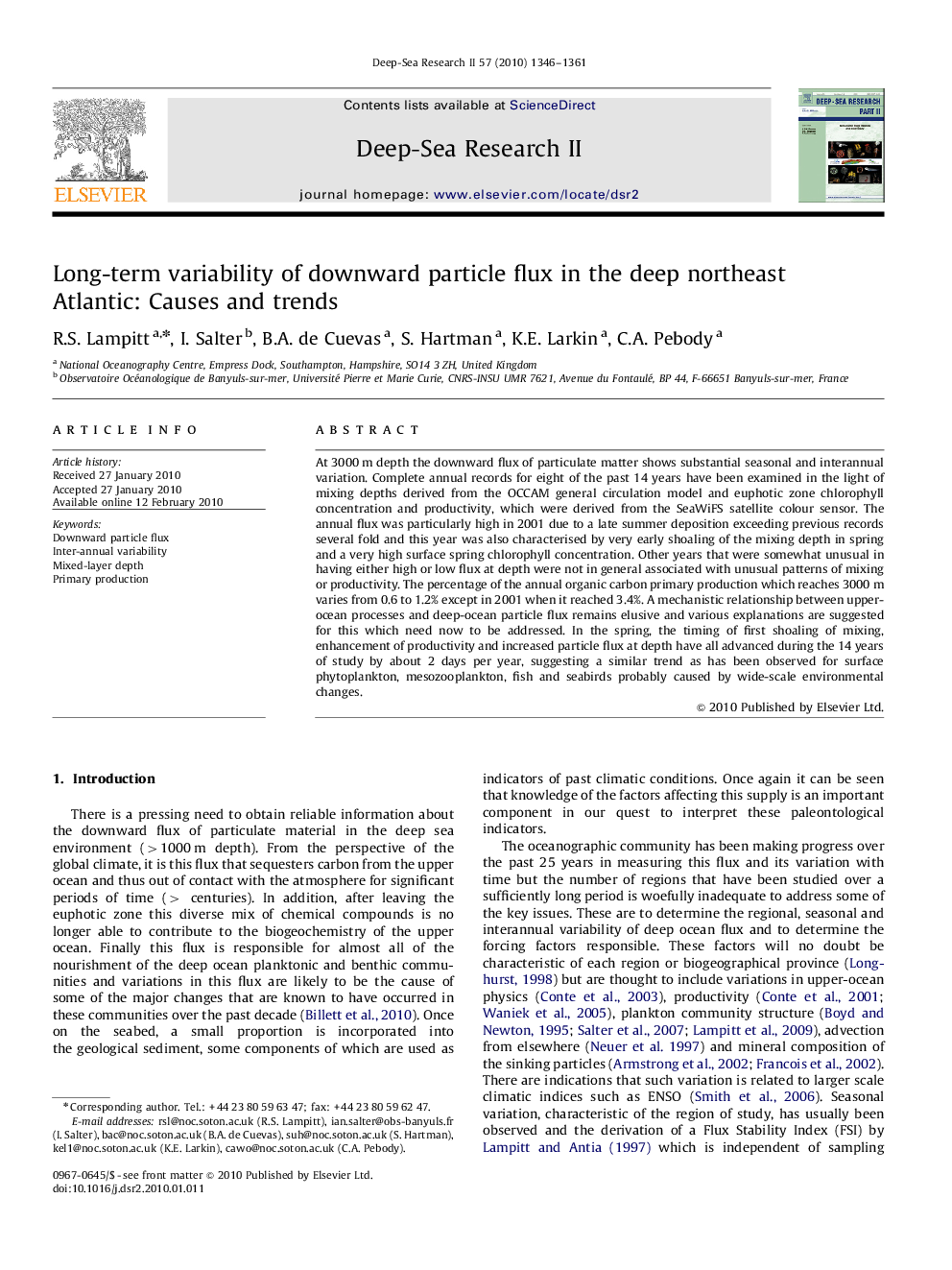| Article ID | Journal | Published Year | Pages | File Type |
|---|---|---|---|---|
| 4536959 | Deep Sea Research Part II: Topical Studies in Oceanography | 2010 | 16 Pages |
At 3000 m depth the downward flux of particulate matter shows substantial seasonal and interannual variation. Complete annual records for eight of the past 14 years have been examined in the light of mixing depths derived from the OCCAM general circulation model and euphotic zone chlorophyll concentration and productivity, which were derived from the SeaWiFS satellite colour sensor. The annual flux was particularly high in 2001 due to a late summer deposition exceeding previous records several fold and this year was also characterised by very early shoaling of the mixing depth in spring and a very high surface spring chlorophyll concentration. Other years that were somewhat unusual in having either high or low flux at depth were not in general associated with unusual patterns of mixing or productivity. The percentage of the annual organic carbon primary production which reaches 3000 m varies from 0.6 to 1.2% except in 2001 when it reached 3.4%. A mechanistic relationship between upper-ocean processes and deep-ocean particle flux remains elusive and various explanations are suggested for this which need now to be addressed. In the spring, the timing of first shoaling of mixing, enhancement of productivity and increased particle flux at depth have all advanced during the 14 years of study by about 2 days per year, suggesting a similar trend as has been observed for surface phytoplankton, mesozooplankton, fish and seabirds probably caused by wide-scale environmental changes.
